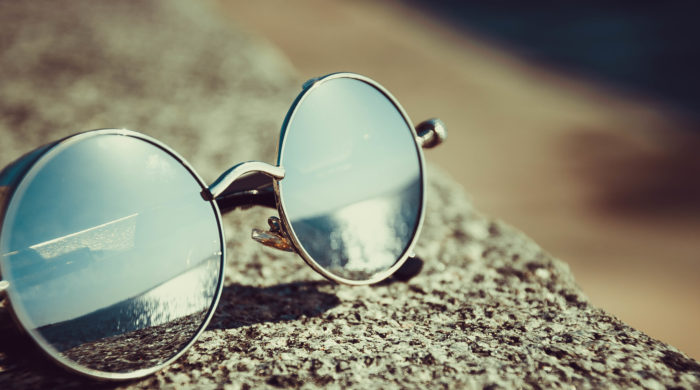Summertime brings with it warm temperatures, extended days, and typically more time spent outside soaking up the sun with family and friends.
If you’re packing a suitcase or beach bag or planning a game of pick-up soccer, take a moment to learn the dangers of physical exertion and prolonged sun exposure in high temperatures. The most severe of these dangers is a condition called heat stroke.
Learning the signs of heat stroke and how to recognize it early can help you enjoy a healthy and safe summer.
What Is Heat Stroke And How Is It Caused?
Anytime your body is exposed to high temperatures for a period of time, it has to work hard to stay cool. Heat stroke occurs when your body loses the fight to maintain a healthy temperature and overheats to a temp of 104 degrees Fahrenheit or higher.
Heat stroke begins with heat exhaustion. When caught early, heat exhaustion can be reversed; and heat stroke can be avoided by taking immediate action.
Heat stroke usually occurs in combination with dehydration because related body functions such as sweating are more active in high heat. Untreated heat stroke can damage vital organs such as the brain, heart, kidneys, and muscles. This can cause serious, long-term complications and even death. Early intervention is key.
Heat stroke can occur in two main ways:
- Exposure to a hot environment – Hot, humid weather can be difficult on your body, especially after several days. This most often occurs in older adults, and people with illnesses.
- Strenuous physical activity – Being active is especially dangerous if you’re not accustomed to hot temperatures, exercise, or a combination of the two. This is often referred to as exertional heat stroke.
Symptoms Of Heat Stroke
Know the symptoms of heat stroke, and respond as soon as possible if you notice yourself or someone else having them.
The symptoms of heat stroke are:
- High body temperature – 104 degrees F or higher
- Behavior changes – bewilderment, slurred speech, irritability, seizures, any behavior or mannerism that seems out character
- Nausea and/or vomiting
- Rapid, shallow breathing
- Headache or muscle cramps
- Quickened heart rate
- Hot, dry, flushed skin
How To Reduce Your Risk Of Heat Stroke
- Dress for the temperature. Wearing excess clothing coupled with high temperatures increases your risk of heat stroke. Wear light, loose clothing and a hat to shade your face and neck. Use sunscreen with 30 SPF or higher.
- Stay hydrated with water. Keep in mind that many non-water drinks (like soda, alcohol, and caffeinated drinks) may be dehydrating. In addition to water, consuming sports drinks with added electrolytes may also help you stay hydrated in hot weather.
- Avoid alcohol. Alcohol affects your body’s systems that regulate your internal temperature, making it more difficult for your body to maintain a healthy body temperature.
- Ease into hot weather. If you’re traveling to a hotter place, your body may need some time to adjust to the heat. Ease yourself into the weather, and avoid any strenuous activity for the first few days. Then, follow the rules listed above, and seek care if you experience signs of heat stroke.
Children and older adults are the people most susceptible to heat stroke. For these folks especially, staying hydrated and limiting sun exposure and activity levels is especially important for preventing heat stroke.
Individuals with pre-existing sunburns are also at greater risk of heat-related illnesses. Some health conditions and medications can make an individual more susceptible; talk to your physician about any medications you’re on and how they may affect your risk of heat stroke.
Monitoring Your Hydration Level
To monitor your hydration this summer to reduce your risk of heat-related illness, pay close attention to:
- The color of your urine. Your urine should be a light, clear yellow color. Dark urine is an indication of dehydration. If you notice your urine seems dark, drink more water.
- Monitor your weight before/after activity. By subtracting your weight after from your weight before strenuous activity, you can determine how much water you’ve lost. This can help you figure out the amount of fluid you need to drink to rehydrate.
What To Do If You’re Experiencing Heat Stroke
Heat stroke is very dangerous. If you experience or notice someone else having the symptoms above, seek immediate medical attention by calling 911. While you’re waiting for help to arrive, take these immediate actions to cool down:
- Find shade. Remove yourself or the affected person from direct sunlight, by taking them inside or into the shade.
- Remove excess clothing. Remove any hats, shoes, socks, and other excess clothing.
- Use cold water. Splash, spray, or wade the person into the nearest body of water. Place wet towels or ice packs on the person’s body, especially the head and neck, back, groin, and armpits, (Note: Do not use ice on children or older adults)
Individuals who experience heat stroke are more sensitive to hot weather after they’ve recovered. Before returning to your normal activities, consult a health provider about what type of exercise is appropriate in high temperatures, and how long you can be out in the sun when temps are elevated.
This summer, following the tips listed above and being prepared can help you enjoy the sun worry-free. For more information on how you can avoid heat stroke and other heat-related conditions this summer, talk to a primary care provider. We’re here to support you in having a happy, healthy summer season!
